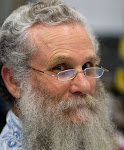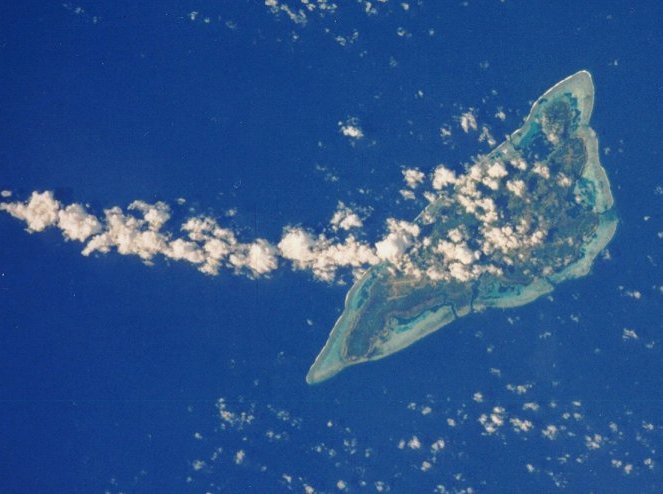The Yap Department of Education offices were in two modest-sized buildings. One comprised perhaps a dozen administration offices; the other had been classrooms (six of them, I think), and was where all the development work was done - and where my desk was. The leader of the Bilingual Education project of which I, and half a dozen or so Yapese curriculum-development staff, were the workforce, was run by an American lady, Bethel Oestman. Bethel had been a Peace Corps Volunteer. Susan and I and Johnny actually stayed in her house in Yap for the first few days - a week? - that we were there. The project was Bethel's. She was a person of contagious enthusiasm, and great industry.
There were a number of curriculum writers who were my co-workers:
- Defeg - now dead - was perhaps the most brilliant teacher I have ever known - and one of the funniest persons I have known. He still taught at times, but his main work was writing materials for us.
- Fithing - our artist. I still have a lot of his drawings.
- Ilyaw - curriculum writer - I had known her in Hawai'i.
- Giloochen - typist, secretary
- Chingyen - curriculum writer (he didn't like me very well - I suspect my arrogance rather got up his nose :-)
- Gilnifrad - curriculum writer and a very dear friend
- Pugram - my closest friend in Yap. He became the Director of Education, perhaps still is now
We all worked together in one classroom, desks around the room. These were, in a way, halcyon days for me. When I first began living in Yap - in 1969, again in 1972, and those two weeks in 1975 - I had normally spoken Yapese with Yapese persons - but I was very conscious of speaking a foreign language. These first few months working in the Education Department, where, except when talking to Bethel or other non-Yapese, I was immersed in a totally Yapese language environment all day, five days a week, had the result that when I spoke in Yapese, I was no longer speaking Yapese; I was just speaking.
To be sure, I imagined, by the time I left Yap, that my Yapese was practically native. This was a very silly idea, as my work over the last year or so in translating some of those materials into English has shown me. Yet - the translation itself is still that simply of reading an essay - not that of reading an essay in a (consciously) foreign tongue. Then I have to write it in English. To the extent that the dictionary work I did in Yap was well-done - a rather different question from whether it was worth doing, I am afraid - to that extent, it was possible only because of the fact that Yapese was my normal environment during my working day, and a considerable amount of my leisure time as well.
I recall an incident that happened a couple of years later that brings the difference to mind fairly sharply. I had gone to the bank, and Giloochen happened to be there in the same queue as me, just in front of me. We were chatting - about what, I don't know - work, perhaps - when one of the two (American) Mormon missionaries came into the queue behind me. He had, by then, learnt some Yapese, but was not very comfortable at it. And he knew Giloochen - so addressed her in English. And she replied. In English. It was a startling experience for me. For an instance my mind saw, not Giloochen, whom I knew, to whom I gave materials for typing, with whom I shared betel nut. She was, for an instant, brown-skinned native girl. It was a shocking feeling.

